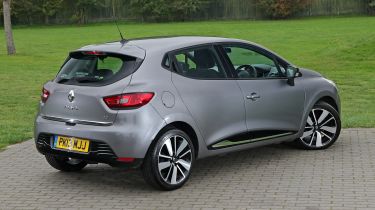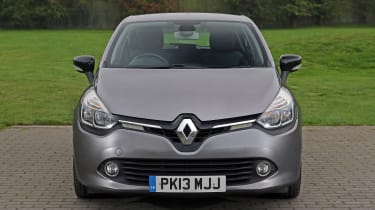Used Renault Clio (Mk4, 2012-2019) - How much will it cost?
Clio has great economy, low emissions and cheap insurance; high depreciation is the only real fly in the ointment, although this is good news for used car buyers
The Renault Clio doesn’t retain its value as well as the Volkswagen Polo, but this means that your money will go further when buying a used example. Running costs should be kept in check thanks to proven engines and the fuel economy of the diesel engine.
Prices
With the earliest Mk4 Clios now approaching their 10th birthday, it’s no surprise to see some seriously tempting prices on the used car market. A budget of £4,000 should be enough to secure a 2013 model, possibly £3,500 if you’re prepared to accept a few battle scars and six figures on the odometer.
An early Mk4 Clio looks more desirable than an outgoing Mk3 Clio of the same year, not least because it looks very similar to the current model. It’d be worth spending a little extra to secure a Mk4.
You can check out the latest used prices for the Renault Clio on our Find a Car service or value a specific model using our free car valuation tool.
Economy and CO2 emissions
As well as good looks, the Clio also has low running costs. It’s worth noting that Renault only provided economy figures for the Mk4 Clio as measured on the older, less accurate NEDC test – newer WLTP figures are considered closer to those achievable in ‘real-world’ driving.
Used - available now
All engines are fitted with stop/start technology as standard, and economy is decent across the board. The TCe 75 0.9-litre returns a claimed 56.5mpg on average – a figure matched by the more powerful TCe 90 version. Both emit a claimed 114g/km of CO2.
The 1.5-litre dCi 90 diesel returns a claimed 70.6mpg regardless of gearbox choice, with 106g/km of CO2 quoted for both.
Running costs
All Clios need to be serviced every 18,000 miles and 12 or 24 months depending on age and engine. Check-ups alternate between minor and major, at £69 or £139 for cars on a 12-month schedule, or £169 or £269 for models on the 24-month schedule.
Brake fluid needs to be replaced every 36 months (£39) and coolant every five years or 90,000 miles (£89). TCe motors are chain-driven, but dCi and 1.2 16v units have a cambelt; change this every six years or 90,000 miles (£199). An air-con service every two years costs £69.
Perhaps with all those Parisian parking scrapes in mind, the Clio has been designed with plastic body panels that are cheap and simple to replace.
Coupled to the slow pace from the majority of engines, it’s no surprise the range is cheap to insure at group 7 to 12.
It’s worth noting that Renault reduced the length of its standard new car warranty from four years and 100,000 miles to three years and 60,000 miles in 2018, while no Mk4 Clios are covered by Renault’s current five-year package.
The downside when buying new was the Clio’s weak residual values compared to those of its key rivals, so expect it to have lost a good proportion of its value when it comes to selling it. The VW Polo will perform better, and even the Peugeot 208 should look like a stronger bet at resale time. The Clio should be cheaper to buy, but you’ll get less for it when it’s time to sell.












